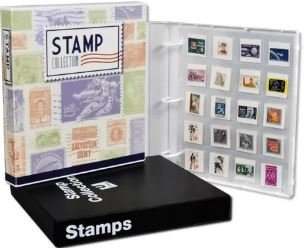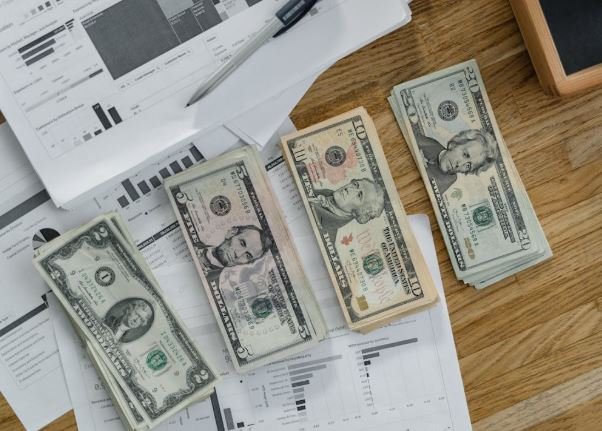Stamp collecting, or philately, can be an incredibly rewarding hobby, but when it comes time to value your stamp collection accurately, the process can seem daunting. Many collectors fear that they may be underpricing their stamps or, worse yet, misjudging their collection’s true worth. In this guide, we’ll walk you through the steps necessary to value your stamp collection accurately, so you can avoid costly mistakes like underpricing or misjudgments that could affect your collection’s value in the long run.

1. Understand the Basics of Stamp Valuation
The first step in valuing your stamp collection accurately is to understand what factors influence stamp values. Stamps are not valued based on their face value but rather on their rarity, demand, condition, and historical significance. Here’s a breakdown of the key factors:
- Rarity: Stamps that were produced in limited quantities or have printing errors are often worth more.
- Condition: A stamp in mint condition or with minimal imperfections will generally be valued higher than a damaged one. This is often referred to as the stamp’s “grade.”
- Demand: Some stamps are in higher demand due to collector trends or historical events.
- Age and Historical Significance: Stamps that commemorate significant historical events or are part of limited edition releases often carry a premium.
To value your stamp collection accurately, it’s crucial to understand these variables and assess each stamp accordingly.
2. Research Your Stamps Using Reliable Resources
A common mistake in valuing a stamp collection is relying on outdated or inaccurate sources of information. To value your stamp collection accurately, use reputable stamp catalogs and online resources such as:
- Stanley Gibbons Catalog: A globally recognized catalog for stamp values and collecting information.
- Scott Catalogue: Particularly popular in the U.S., the Scott Catalog offers comprehensive details on stamps from around the world.
- Online Auction Sites: Platforms like eBay can provide insight into the current market value by showing what similar stamps are selling for.
- Philatelic Societies: Many societies provide guides and valuation advice, which can be invaluable for avoiding underpricing or misjudgments.
The more resources you cross-reference, the more accurate your stamp valuations will be.
3. Assess the Condition of Your Stamps
The condition of your stamps is perhaps the most important factor in valuing your stamp collection accurately. Even a rare and historically significant stamp can lose its value if it’s in poor condition. Here are some aspects to examine:
- Perforations: Ensure the perforations around the stamp are intact. Missing or ragged perforations can significantly lower its value.
- Centering: The stamp’s design should be centered. A poorly centered stamp may be worth less than one that is perfectly aligned.
- Gum: If a stamp is unused, the gum (adhesive) on the back should be intact and not damaged or discolored.
- Creases, Stains, and Tears: Any visible damage will reduce a stamp’s value. Even slight wear can lead to misjudgments when estimating its worth.

By carefully grading each stamp’s condition, you’ll avoid underpricing stamps that are in better shape than you think and prevent misjudgments that could lead to overvaluation.
4. Seek Professional Appraisal
If you’re serious about valuing your stamp collection accurately, consider seeking a professional appraisal from an expert. A certified philatelist can provide a detailed and accurate valuation of your collection. Here’s why a professional appraisal is important:
- Expertise: Professionals have years of experience and can assess your collection’s value with a keen eye for details that might be missed by a novice collector.
- Market Insight: A professional can help you navigate the nuances of the current stamp market, avoiding underpricing or misjudgments based on outdated information.
- Official Documentation: If you plan to insure your stamp collection, an appraisal is often required by insurance companies to determine the proper coverage amount.
A professional can also give you a fair market value, helping to ensure that you’re not underpricing your collection if you decide to sell it.
5. Consider Auction and Sale History
The stamp market can fluctuate, but one of the most reliable ways to value your stamp collection accurately is by checking the auction history of similar stamps. Auction results give you a real-world picture of what collectors are currently paying for specific stamps, which helps in understanding their market value.
You can search for past auctions of similar stamps on:
- Philatelic Auction Houses: Many auction houses specialize in stamps, and their past results are often available for research.
- Online Auction Platforms: eBay, for example, provides historical sales data, giving you insight into recent sales of stamps like yours.
By looking at auction and sale histories, you’ll get a better sense of your collection’s current market value and avoid misjudgments regarding its worth.

6. Stay Updated with Market Trends
Stamp collecting is not a static hobby. Market trends change over time, which can affect the value of your collection. To value your stamp collection accurately, staying updated on the latest market trends is important. Keep an eye on:
- Philatelic Shows and Exhibitions: These events often highlight stamps currently in demand or experiencing an uptick in value.
- Price Adjustments in Catalogs: Reputable catalogs like Stanley Gibbons and Scott periodically update their pricing information to reflect current market conditions.
- Online Communities: Participating in forums or social media groups for stamp collectors can give you valuable insight into which stamps are gaining or losing value.
Staying informed will help you value your stamp collection accurately and avoid underpricing stamps due to outdated trends.
7. Be Aware of Common Valuation Mistakes
Finally, it’s important to avoid common mistakes that many collectors make when valuing their stamp collection accurately:
- Overlooking Minor Damages: Even slight imperfections can lower a stamp’s value. Always inspect every detail.
- Misjudging Rarity: Don’t assume a stamp is valuable just because it looks old or unusual. You need to check its rarity through research.
- Assuming Market Value Matches Catalog Value: Catalog values often represent a stamp’s potential value, not necessarily what it will sell for in the current market.
- Ignoring Demand: A rare stamp is not necessarily valuable if there’s no demand for it. Always check current market trends.
By avoiding these common missteps, you can ensure that you value your stamp collection accurately and avoid both underpricing and misjudgments that could result in a miscalculated valuation.

One of the most essential skills a collector can learn is how to clean stamps safely. Proper cleaning methods can unlock the potential for preserving your stamps’ value, while improper cleaning techniques can ruin your finds.
Conclusion
Valuing your stamp collection accurately is a delicate process that requires attention to detail, research, and sometimes professional guidance. By understanding the key factors that influence a stamp’s value, researching reliable sources, carefully assessing each stamp’s condition, and staying updated on market trends, you can avoid underpricing or misjudgments that might undermine the value of your collection.
Remember, the goal is not just to estimate a stamp’s worth but to have an accurate, informed understanding of its true value. Whether you’re considering selling, insuring, or simply appreciating your collection, this thorough approach will ensure you make well-informed decisions about its worth.




